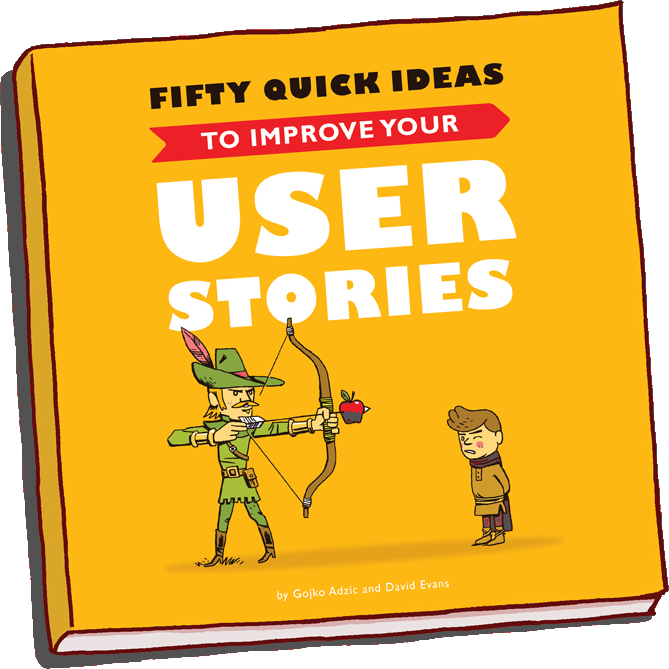Table of contents | page # |
|---|
Creating stories |
| Tell stories, don’t write them | 10 |
| Don’t worry too much about story format | 12 |
| Describe a behaviour change | 14 |
| Describe the system change | 16 |
| Approach stories as survivable experiments | 18 |
| Watch out for generic roles | 20 |
| Evaluate zone of control and sphere of influence | 22 |
| Put a ‘best before’ date on stories | 24 |
Planning with stories |
| Set deadlines for addressing major risks | 28 |
| Use hierarchical backlogs | 30 |
| Group stories by impact | 34 |
| Create a user story map | 36 |
| Change behaviours using the CREATE funnel | 38 |
| Set out global concerns at the start of a milestone | 40 |
| Prioritise according to stages of growth | 42 |
| Prioritise using purpose alignment | 44 |
| Make a stakeholder chart | 46 |
| Name your milestones | 48 |
| Focus milestones on a limited number of user segments | 50 |
Discussing stories |
|---|
| Use low-tech for story conversations | 54 |
| Imagine the demonstration | 56 |
| Diverge and merge for story discussions | 58 |
| Involve all roles in the discussion | 60 |
| Measure alignment using feedback exercises | 62 |
| Play the devil’s advocate | 64 |
| Divide responsibility for defining stories | 66 |
| Split business and technical discussions | 68 |
| Investigate value on multiple levels | 70 |
| Discuss sliding-scale measurements with QUPER | 72 |
Splitting stories |
|---|
| Start with the outputs | 76
|
| Forget the walking skeleton - put it on crutches | 78 |
| Narrow down the customer segment | 80 |
| Slice by examples of usefulness | 82 |
| Split by capacity | 84 |
| First dummy, then dynamic | 86 |
| Simplify outputs | 88 |
| Split learning from earning | 90 |
| Extract basic utility | 92 |
| When all else fails, slice the hamburger | 94 |
Managing iterative delivery |
|---|
| Don’t push everything into stories | 98 |
| Budget instead of estimate | 100 |
| Avoid using numeric story sizes | 102 |
| Estimate capacity based on rolling number of stories | 104 |
| Estimate capacity based on analysis time | 106 |
| Pick impacts instead of prioritising stories | 108 |
| Never say ‘no’ - say ‘not now’ | 110 |
| Split UX improvements from consistency work | 112 |
| Get users to opt in to large UX changes | 114 |
| Check outcomes with real users | 116 |
| Throw stories away after they are delivered | 118 |
| |
| Bibliography | 120 |
